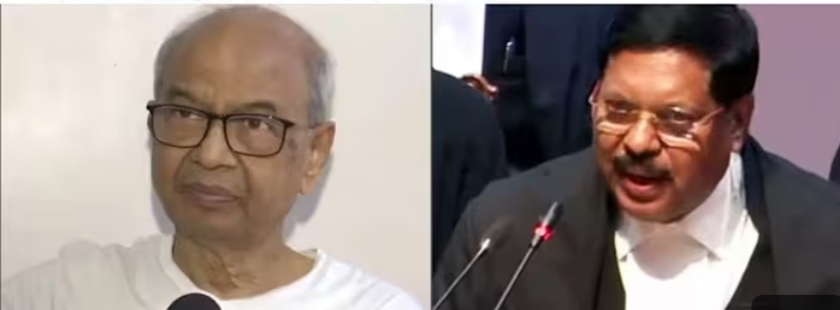
“A Hero in Contempt: How Mainstream Media and Social Media Are Celebrating Rakesh Kishore, the Shoe-Thrower at the Supreme Court Chief Justice”
In an unsettling episode that unfolded in the Supreme Court on October 6, 2025, advocate Rakesh Kishore took an aggressive stand by hurled a shoe at Chief Justice of India BR Gavai. Kishore, 71, unabashedly claimed his act was motivated by “emotional pain” over alleged judicial insults to Sanatan Dharma, asserting no regret despite being suspended by the Bar Council of India and facing criminal contempt proceedings. More alarming is the significant glare of mainstream media and social media turning this act of courtroom violence into a badge of religious heroism — a disturbing trend that raises profound questions about our media, societal biases, and the erosion of moral boundaries.
The Incident: A Confrontation Fuelled by Religious Sentiments
The provocation for Kishore’s shocking act was a remark by CJI Gavai, who, while adjudicating a case about the restoration of a damaged Vishnu idol at Khajuraho, suggested petitioners “go and ask the idol itself” as courts could not order archaeological restoration. Kishore perceived this as a sacrilegious insult to Sanatan Dharma, India’s ancient Hindu faith tradition, and retaliated with physical aggression in full public view inside the apex court—an unprecedented breach of judicial decorum.
Despite swift security intervention and suspension by the Bar Council of India, Kishore stood firm defending his action as a manifestation of pain against perceived systemic bias. His justification has triggered viral support on social media, where hashtags praising him as the “defender of Sanatan Dharma” trended for hours, propelled by influential voices and right-wing sympathizers rallying behind him.
Mainstream and Social Media’s Dangerous Celebration
The coverage of the event by mainstream media often walked a fine line between reporting and glorification. Several outlets framed Kishore’s act within the narrative of religious defense, downplaying the gravity of attacking the highest judicial authority of the country. Social media amplified this narrative exponentially, with viral hashtags and posts glorifying Kishore’s defiance. This mass digital validation of lawlessness in the name of religion sows dangerous seeds of moral relativism, where the sanctity of institutions and public order are sacrificed at the altar of misguided religious fervor.
Worryingly, calls to exempt Kishore from severe consequences echo louder when commentators highlight his identity as a “Sanatani Hindu” standing up for the faith. This selective empathy starkly contrasts with the systemic vilification and swift punitive actions often meted out in cases involving marginalized communities.
A Tale of Two Indias: Who Faces Justice and Who Evades It?
Imagine if the assailant was a Dalit, Muslim, or Adivasi, and the target an upper-caste Hindu or another dominant social group. The consequences would almost certainly have been severe and immediate, with courts and police acting decisively, the media framing the story within national security and public order paradigms, and social media rife with condemnation rather than celebration. This stark double standard reflects hardwired social prejudices impacting justice delivery and public discourse.
Statistics bolster this grim reality: Muslims, Dalits, and Adivasis make up a disproportionate majority of India’s prison population, often victims of systemic bias and discriminatory legal processes. False cases and severe retaliatory actions are widespread against these communities, especially when they assert rights or voice dissent. Contrastingly, upper-caste Hindu perpetrators of public violence frequently receive lenient treatment and sometimes tacit endorsement, revealing institutional fissures along caste and religious lines.
The Normalisation of Moral Decay in the Name of Hyper-Nationalism
The past decade, particularly since 2014, has witnessed an alarming surge in religious fanaticism and hyper-nationalism, whereby acts of mob lynching, targeted violence against Muslims, Dalits, Adivasis, and even women have become disturbingly routine. The celebration of such acts in the public sphere—often with impunity—reflects a slow but steady erosion of foundational constitutional values like equality, justice, and dignity.
In this context, the shoe-hurling episode is not isolated but symptomatic of a society increasingly accommodating extremism masquerading as defense of “Sanatan Dharma” or national identity. The glorification of violent acts against perceived “outsiders” or “others,” coupled with a largely silent or complicit mainstream media, underscores a deep moral rot. The media’s uncritical amplification of such incidents risks aggravating communal rifts and undermining public trust in impartial justice.
Why Has No Stringent Action Been Taken?
Despite legal procedures initiated against Kishore, the pace and nature of action remain lukewarm. The lack of immediate, unequivocal punitive measures and the lenient tone in some media narratives suggest a reluctance to challenge a convenient narrative hero who aligns with dominant religious rhetoric. This inertia sends a dangerous message that criminal acts can be condoned or overlooked if framed as “cultural” or “religious” defence.
Equally troubling is the absence of mainstream media introspection and accountability for enabling this cultural celebration of defiance against democratic institutions. The media must resist becoming an echo chamber for extremist views and instead uphold its constitutional responsibility to inform objectively with a lens of equity and justice.
The Path Ahead: Reclaiming Moral and Judicial Integrity
India’s democratic fabric is severely tested when its highest courts and constitutional values are openly challenged by religious fanaticism and societal biases in full public glare. The mainstream and social media have a critical role in shaping public opinion; they must eschew sensationalism and biased narratives that glorify criminality in religious garb.
Judiciary and law enforcement must act decisively and transparently in cases like Rakesh Kishore’s, setting a precedent that no one is above the law irrespective of caste, religion, or political alignment. Society must recognize the unsettling patterns of selective justice and work toward equity and inclusion rather than division.
Moreover, an honest reckoning with the decade-long rise in moral and social depravity linked to hyper-nationalism is needed. Restoring faith in India’s pluralistic ethos and constitutional values requires collective responsibility, especially from media gatekeepers and institutions entrusted to protect democracy.
A Society at Crossroads
Rakesh Kishore’s shoe at the Supreme Court is not just an attack on one man or institution but on ‘the idea of India’ and on the impartial justice and moral order itself. The dangerous hero worship by sections of media and public reflects a broken societal compass that celebrates defiance steeped in religious fanaticism and selective rage.
If unchecked, this trend threatens to normalize violence in public institutions, deepen societal divides, and corrode India’s pluralistic foundations. It is imperative that reason, rule of law, and respect for democratic institutions override sectarian passions to reclaim India’s constitutional promise for all its citizens.
Hasnain Naqvi is a former member of the history faculty at St. Xavier’s College, Mumbai


